
Detective fiction is a subgenre of crime fiction and mystery fiction in which an investigator or a detective—whether professional, amateur or retired—investigates a crime, often murder. The detective genre began around the same time as speculative fiction and other genre fiction in the mid-nineteenth century and has remained extremely popular, particularly in novels. Some of the most famous heroes of detective fiction include C. Auguste Dupin, Sherlock Holmes, Kogoro Akechi, and Hercule Poirot. Juvenile stories featuring The Hardy Boys, Nancy Drew, and The Boxcar Children have also remained in print for several decades.

Young and Innocent, released in the US as The Girl Was Young, is a 1937 British crime thriller film directed by Alfred Hitchcock and starring Nova Pilbeam and Derrick De Marney. Based on the 1936 novel A Shilling for Candles by Josephine Tey, the film is about a young man on the run from a murder charge who enlists the help of a woman who must put herself at risk for his cause. An elaborately staged crane shot Hitchcock devised, which appears towards the end of the film, identifies the real murderer.

Samuel Dashiell Hammett was an American writer of hard-boiled detective novels and short stories. He was also a screenwriter and political activist. Among the characters he created are Sam Spade, Nick and Nora Charles, The Continental Op and the comic strip character Secret Agent X-9.
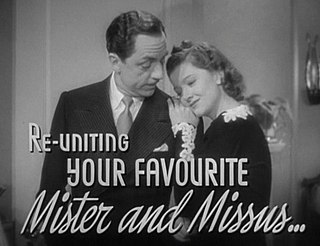
Nick and Nora Charles are fictional characters created by Dashiell Hammett in his novel The Thin Man. The characters were later adapted for film in a series of films between 1934 and 1947; for radio from 1941 to 1950; for television from 1957 through 1959; as a Broadway musical in 1991; and as a stage play in 2009.

Mystery is a fiction genre where the nature of an event, usually a murder or other crime, remains mysterious until the end of the story. Often within a closed circle of suspects, each suspect is usually provided with a credible motive and a reasonable opportunity for committing the crime. The central character is often a detective, who eventually solves the mystery by logical deduction from facts presented to the reader. Some mystery books are non-fiction. Mystery fiction can be detective stories in which the emphasis is on the puzzle or suspense element and its logical solution such as a whodunit. Mystery fiction can be contrasted with hardboiled detective stories, which focus on action and gritty realism.
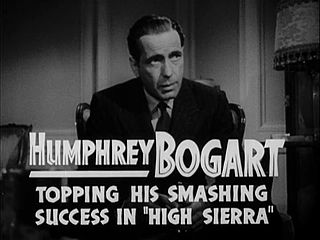
Sam Spade is a fictional character and the protagonist of Dashiell Hammett's 1930 novel The Maltese Falcon. Spade also appeared in four lesser-known short stories by Hammett.

Peter Robinson was a British-born Canadian crime writer who was best known for his crime novels set in Yorkshire featuring Inspector Alan Banks. He also published a number of other novels and short stories, as well as some poems and two articles on writing.
The Crime Writers of Canada Awards of Excellence, formerly known as the Arthur Ellis Awards, are a group of Canadian literary awards, presented annually by the Crime Writers of Canada for the best Canadian crime and mystery writing published in the previous year. The award is presented during May in the year following publication.
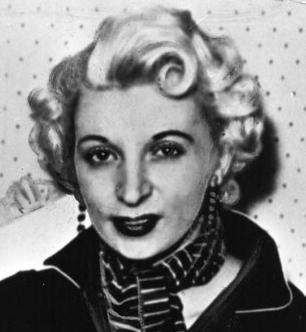
Ruth Ellis was a Welsh nightclub hostess and convicted murderer who became the last woman to be executed in the United Kingdom following the fatal shooting of her lover, David Blakely.

Ordeal by Innocence is a work of detective fiction by British writer Agatha Christie, first published in the UK by the Collins Crime Club on 3 November 1958 and in the US by Dodd, Mead and Company the following year. The UK edition retailed at twelve shillings and sixpence (12/6) and the US edition at $2.95.

The Witch of Edmonton is an English Jacobean play, written by William Rowley, Thomas Dekker and John Ford in 1621.
Detective Superintendent Alan Banks is the fictional protagonist in a series of crime novels by Peter Robinson. From 2010 to 2016 several of the novels were adapted for television, and other original stories were produced, under the series title DCI Banks with Stephen Tompkinson in the lead role.
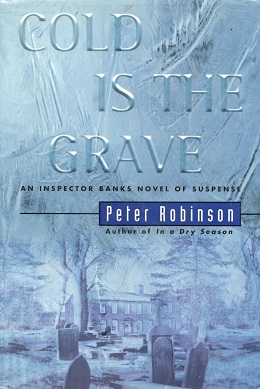
Cold Is the Grave is the 11th novel by Anglo-Canadian detective fiction writer Peter Robinson in the Inspector Banks series, published in 2000. It won the 2001 Arthur Ellis Award for Best Crime Novel, and the Danish Palle Rosenkrantz Award.

Rick Mofina is a bestselling Canadian author of more than 30 crime fiction and thriller novels, with some 2 million copies of his books sold worldwide in nearly 30 countries. This includes an illegal Iranian translation of his first thriller, If Angels Fall. He grew up in Belleville, Ontario and began writing short stories in grade school. He sold his first short story at the age of fifteen. He sold subsequent short stories while in high school to various magazines. After finishing high school he worked for a few years in factories.

Robert Patterson Ellis is an American writer of crime fiction. Ellis's novels are set in Los Angeles, Philadelphia, and Washington, D.C.
Pamela Colloff is an American journalist. She has contributed to The New Yorker, but a majority of her work has been featured in Texas Monthly, where she was an executive editor. As of 2017, Colloff is a senior reporter at ProPublica and a writer-at-large at The New York Times Magazine.
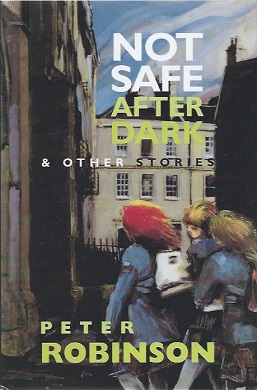
Not Safe After Dark (1998) is the first collection of short stories by Peter Robinson; stories previously published in crime anthologies and magazines. They include three Inspector Banks short stories, one previously unpublished. The 1998 edition published by Crippen & Landru, Virginia as Not Safe After Dark and Other Stories included thirteen stories ; the 2004 edition published by Macmillan, London as Not Safe After Dark and Other Works included twenty stories. Robinson is the writer of the Inspector Banks series of novels.
The Crime Writers of Canada Award for Best Novel is an annual literary award, presented as part of the Crime Writers of Canada Awards of Excellence program to honour books judged as the best crime novel published by a Canadian crime writer in the previous year.
The Inspector Banks series is a collection of mystery novels by Peter Robinson about Detective Superintendent Alan Banks.














